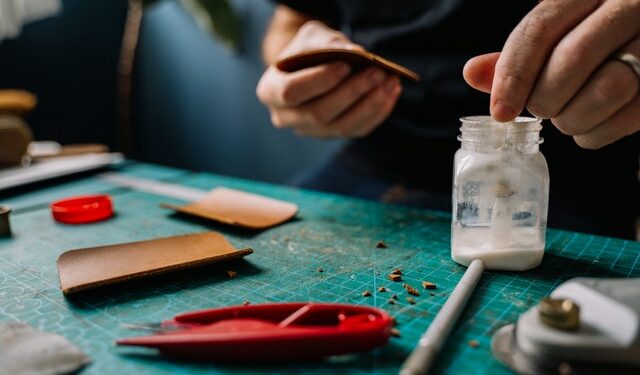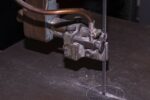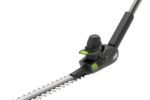How to dissolve wood glue

When it comes to dissolving wood glue, there are a few different methods you can try.All of them involve using some type of solvent, which is a liquid that can dissolve other substances.The most common solvents used for this purpose are acetone and alcoholYou can try using one or both of these solvents to see which works best for you. If you’re using acetone, start by applying a small amount to a cloth. Then, use the cloth to rub the glue off of the surface you’re trying to clean. You may need to apply more acetone as you go along. Once the glue is gone, wash the area with soap and water to remove any residue. If you’re using alcohol, start by pouring some onto a cloth. Then, use the cloth to blot at the glue until it starts to dissolve. You may need to reapply alcohol several times before the glue is completely gone. Once it’s dissolved, wipe away any residue with a clean cloth. Both of these solvents are effective at dissolving wood glue. Try one or both of them to see which works better for you.
What is wood glue and what are its uses
Wood glue is a type of adhesive that is used to bond pieces of wood together. It is made from a variety of different materials, but the most common type is made from animal hide or bones. Wood glue is often used in carpentry and other types of woodworking.
How to dissolve wood glue
There are many methods that can be used to dissolve wood glue. The most common method is to use warm water and soap. This will usually loosen the adhesive enough to allow the pieces of wood to be pulled apart. If this does not work, there are a few other methods that can be tried.
One way to dissolve wood glue is to use acetone. Acetone is a strong solvent that can be found in many household products, such as nail polish remover. It is important to use acetone in a well-ventilated area, as it can be harmful to breathe in the fumes.
Another way to dissolve wood glue is to use white vinegar. Vinegar is a mild acid that can break down the bonds of the wood glue. It is important to dilute the vinegar with water before applying it to the glued surface, as undiluted vinegar can damage some types of wood.
If you are working with a small amount of wood glue, you may be able to dissolve it with rubbing alcohol. Rubbing alcohol is also known as isopropyl alcohol. Like acetone, it is important to use rubbing alcohol in a well-ventilated area.
Once the wood glue has been dissolved, you will need to clean up any messes that have been made. Acetone and rubbing alcohol can be removed with a damp cloth. White vinegar can be neutralized with a solution of baking soda and water.
If you are using wood glue, it is important to follow all safety instructions that come with the product. This includes wearing gloves and eye protection, as well as working in a well-ventilated area. These precautions will help to prevent injuries from occurring.
When using wood glue, it is also important to test the adhesive on a small piece of wood before applying it to the project. This will allow you to see how well the glue works and to make sure that it does not damage the wood.
Wood glue is a necessary part of many woodworking projects. By following these tips, you can ensure that the adhesive is used safely and effectively.
What are the benefits of dissolving wood glue
When it comes to woodworking, one of the most important aspects is ensuring that the pieces are glued together correctly. This can be a challenge, as even the slightest misalignment can lead to a weak joint and potential problems down the road.
One way to avoid these issues is by dissolving the wood glue after it has been applied. This will help to ensure that the pieces are perfectly aligned and will stay in place permanently. There are several benefits of doing this, including:
1) A stronger joint that will not come apart over time;
2) Reduced chances of damaging the wood due to excess force or pressure; and
3) A neater appearance that is less likely to show any evidence of gluing.
Dissolving wood glue is not a difficult process, but it does require the use of some specialized chemicals. These can be found at most hardware stores or online retailers. Once you have the necessary supplies, simply follow these steps:
1) Apply the wood glue to the joint as usual;
2) Immediately afterward, apply a small amount of dissolving chemical to the joint with abrush or other applicator;
3) Allow the chemical to sit for a few minutes before wipe it away with a clean cloth; and
4) Repeat steps 2-3 until the wood glue has been completely dissolved.
By following these simple steps, you can create stronger and more durable joints in your woodworking projects. Not to mention, you’ll also enjoy the peace of mind that comes with knowing your work will last for years to come.
How to clean up any messes made while dissolving wood glue
When it comes to wood glue, there are a few things you need to know in order to get the job done right. In this blog post, we’ll discuss the best ways to dissolve wood glue, as well as how to clean up any messes made while doing so. Let’s get started!
There are a few different ways that you can dissolve wood glue, but one of the most effective is to use vinegar. Simply soak a rag in vinegar and then apply it to the area where the wood glue is located. Let it sit for a few minutes before scrubbing at the glue with the rag. You may need to repeat this process a few times before the glue comes completely off.
If you don’t have vinegar on hand, you can also try using lemon juice or hot water. Soak a rag in either of these liquids and then apply it to the glued area in the same way as you would with vinegar. Again, let it sit for a few minutes before scrubbing at the glue.
Once you’ve gotten the wood glue off, it’s important to clean up any residue that may be left behind. Vinegar, lemon juice, and hot water can all help to break down the glue, making it easier to wipe away. Use a damp rag to remove any leftover glue and then dry the area with a clean towel.
With these tips in mind, dissolving wood glue should be a breeze! Just remember to take your time and be patient, and you’ll have no trouble getting rid of that pesky glue.
Tips for using wood glue safely and effectively
Wood glue is a great way to bond pieces of wood together, but it can be tricky to use effectively. Here are some tips for dissolving wood glue and getting the job done right.
– Make sure the area you’re working in is well-ventilated.
– Use a putty knife or other sharp tool to scrape away as much of the glue as possible.
– Apply acetone or another solvent to dissolve the remaining glue.
– Be careful not to damage the wood while you’re working.
With these tips in mind, dissolving wood glue can be a simple and effective way to bond pieces of wood together. Just be sure to work carefully and in a well-ventilated area, and you’ll be able to get the job done right. Thanks for reading!
How to dissolve wood glue
There are a few ways to dissolve wood glue depending on the ingredients used in the adhesive. In general, acetone or isopropyl alcohol will work to break down the molecular bonds and allow the glue to be wiped away. If you’re looking for a more natural solution, hot water and dish soap may do the trick. Have you ever had to remove wood glue? What method did you use? Let us know in the comments below!
If you’re working with wood glue that is already dry, you’ll need to use a solvent to dissolve it. Acetone and isopropyl alcohol are both effective solvents for this purpose. Simply apply either one to a rag and wipe at the glue until it dissolves. You may need to use a little elbow grease to get it all off. If you’re dealing with a large amount of glue, you may want to soak the area in acetone or alcohol overnight before scrubbing at it.
If you’re looking for a more natural solution, hot water and dish soap can also help break down the adhesive bond. Simply submerge the glued area in hot water for about 20 minutes. This will soften the glue and make it easier to remove. Once the area is soaked, use a scrub brush or sponge to wipe away the softened glue.






